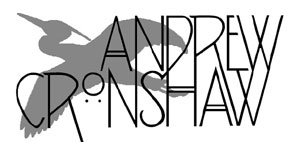
- Andrew Cronshaw website -
- Andrew Cronshaw MySpace -
- Cloud Valley Music website -
- Andrew Cronshaw website -
- Andrew Cronshaw MySpace -
- Back to Reviews Introduction page -
Written in Folk Roots issue 158/159, 1996
ALE MÖLLER
Hästen Och Tranan
Amigo AMCD 732 (1996)
An inspiration. Ale Möller’s work proves that it’s possible to evolve exciting
music that’s closely linked to tradition, borrows from other traditions, but
doesn’t lean on any of the mainstream forms of rock, jazz or classicism; it
stands up for itself and has the richness and energy to carry on moving forward.
Hästen Och Tranan (The Horse And The
Crane) pulls together many of the threads of what he’s been doing to make what I
reckon is his most complete record so far. This is only the second album bearing
his name solo; most of his work has been collaborative projects with a creative
nexus of Swedish musicians. This is a group performance, too, but he wrote all
the music, most of it for a theatre-concert show based on a novel-suite by Sara
Lidman (but this album stands very much on its own, there’s no sense that this
is simply “music from the show”).
13 of the 22 tracks are songs, using lyrics by
Lidman, all strong, complete and very melodic items with none of the wordy
recitative sometimes associated with settings of texts. Like the instrumentals,
these have an existence of their own, not depending on the show for context. The
lyrics flow their resonant images into the music - there’s no need for them to
be easily explained or to tell a story.
The lead voice is that of long-time Möller
collaborator Lena Willemark. In parallel with Möller’s musical evolutions,
Willemark has made a unique place in singing, leaning into the thrilling
tensions of microtones and using her whole voice from whisper through caressing
breathiness to kulning scream with passionate intensity. I realise that
overpraise can diminish, but I seriously rate her as one of the world’s major
vocalists. And there’s enough of her on this album to merit buying it as a
Willemark CD.
She’s a fine fiddler, too, here joining Ellika Frisell (fiddle and
octave-fiddle), Roger Tallroth (mandola, guitar, harmonium) and Olle Steinholz
(bass and tuned glasses). Möller himself plays mandola, lute, hammered dulcimer,
shawm, percussion, harp, stråkharpa and a range of breathy wooden finger-holed
and overtone flutes, all with characteristic drive and intricacy. It’s a small
group, but it achieves a wide scope of sound and texture as the album moves
between sparse reflectiveness, the stately melodiousness of Kommer Du Ej
Snart, and the looping swing of polska, through to the call-and-response
between impassioned solo voice and strident massed vocals with overtone-singing
(by Rolf Lassgård) and epic-style percussion of Saiva.
The first Planxty album or the Bothy Band showed
many people that Irish music could be for them; with good marketing this could
do the same for Swedish music.
© 1996
Andrew Cronshaw
You're welcome to quote from reviews on this site, but please credit the writer
and fRoots.
Links:
fRoots - The feature and
review-packed UK-based monthly world roots music magazine in which these reviews
were published, and by whose permission they're reproduced here.
It's not practical to give, and keep up to date,
current contact details and sales sources for all the artists and labels in
these reviews, but try Googling for them, and where possible buy direct from the
artists.
CDRoots.com in the USA, run by
Cliff Furnald, is a reliable and independent online retail source, with reviews,
of many of the CDs in these reviews; it's connected to his excellent online magazine
Rootsworld.com
For more reviews click on the regions below
NORDIC
BALTIC
IBERIA (& islands)
CENTRAL & EASTERN EUROPE, & CAUCASUS
OTHER EUROPEAN AMERICAS OTHER, AND WORLD IN GENERAL
- Back to Reviews Introduction page -